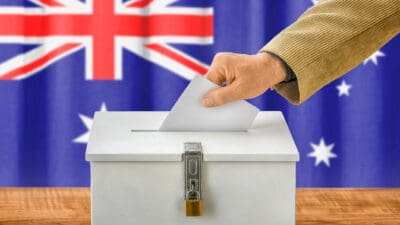The S&P/ASX 200 Index (ASX: XJO) was down 0.6% in early morning trade before recouping most of those losses to be trading down a slender 0.1% at 2:30pm AEDT.
The ASX 200 had marched higher during the course of the day despite a steep drop in US stock markets overnight.
At 2:30pm, the Reserve Bank of Australia (RBA) released its interest rate decision.
The RBA announced a 0.25% hike in interest rates, bringing the official cash rate to 3.10%. This was broadly in line with expectations, though some analysts had been tipping a more dovish stance in the face of softening inflation.
Atop today's cash rate hike, the RBA board also increased the interest rate on Exchange Settlement balances by another 0.25%, taking that to 3.00%.
Investors reacted by sending the ASX 200 down to a 0.3% intraday loss in the minutes following the release of the decision.
December now marks the eighth consecutive month of interest rate hikes from the central bank.
It may be hard to believe, but 3 May marked the first rate increase of this tightening cycle. Seven months ago, the official cash rate stood at 0.10%. And it was the first time the RBA had raised rates since November 2010.
What did the RBA report on today's interest rate increase?
Explaining the bank's decision to tighten yet again, RBA governor Philip Lowe pointed out that inflation in Australia "is too high".
Inflation through the year to October has been running at 6.9%.
Lowe said much of this is due to global factors.
However, he added, "Strong domestic demand relative to the ability of the economy to meet that demand is also playing a role. Returning inflation to target requires a more sustainable balance between demand and supply."
And inflation figures for the full year are expected to come in still higher, likely pressuring the ASX 200 today.
According to Lowe:
A further increase in inflation is expected over the months ahead, with inflation forecast to peak at around 8% over the year to the December quarter. Inflation is then expected to decline next year.
The RBA forecasts that CPI inflation will slow "over the next couple of years". In 2024 it expects CPI inflation will be "a little above 3%".
As for the Aussie economy, Lowe noted it's still growing solidly, which is broadly good news for ASX 200 shares.
But the RBA expects growth to moderate in 2023 "as the global economy slows, the bounce-back in spending on services runs its course, and growth in household consumption slows due to tighter financial conditions".
The RBA is forecasting growth of around 1.5% in both 2023 and 2024.
The central bank also noted that the labour market "remains very tight". The unemployment rate in October fell to 3.4%, the lowest level since 1974. That's seen wages growth "continuing to pick up from the low rates of recent years".
Hoping to avoid a "prices-wages spiral", the RBA does expect wages to continue rising.
Lowe stressed that "The Board's priority is to re-establish low inflation and return inflation to the 2–3% over time."
Perhaps also giving ASX 200 investors the jitters was Lowe's admission that "the path to achieving the needed decline in inflation and achieving a soft landing for the economy remains a narrow one".
What can ASX 200 investors expect next
ASX 200 investors should take note that the RBA "expects to increase interest rates further over the period ahead".
However, Lowe said this "is not on a pre-set course" as the bank monitors the range of forces impacting inflation Down Under.
"The Board remains resolute in its determination to return inflation to target and will do what is necessary to achieve that," Lowe concluded.









